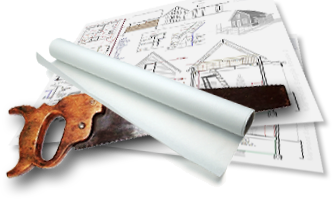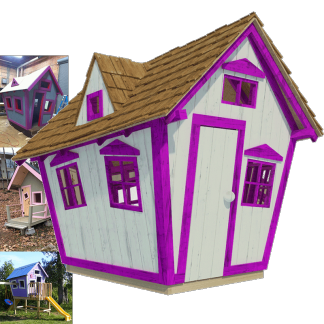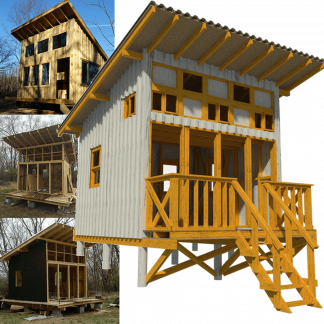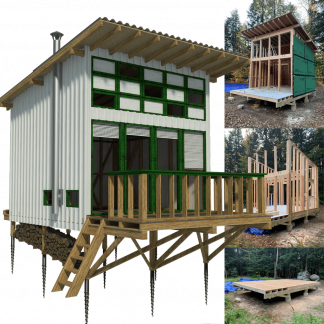Introduction
With homeowners in Springfield, MO, increasingly focused on sustainability and cost savings, roofing has emerged as a key opportunity for energy efficiency. The past decade has witnessed impressive developments in roofing technology, radically transforming how roofs impact the energy efficiency of homes.
From reflective materials and superior insulation to solar-integrated roofing and intelligent ventilation systems, these innovations aren’t just helping the environment; they’re lowering utility bills each month.
If you’re considering new roof construction in Springfield or simply curious about how the latest roofing technology for energy savings works, this guide gives you everything you need to make an informed, energy-conscious decision.
Why Roofing Matters for Home Energy Efficiency
Your roof is your home’s largest heat exchange surface. It directly interacts with sunlight, wind, rain, and temperature fluctuations. An outdated or poorly designed roof can leak air, allow excessive solar heat into your attic, and place an unnecessary burden on your HVAC system, driving up energy costs. On the other hand, a roof built with energy-efficient roofing in Springfield, MO, in mind can stabilize interior temperatures and cut cooling costs significantly during hot Missouri summers.
How Heat Transfer Affects Energy Bills
The primary mechanism impacting energy use through the roof is heat transfer, which happens through radiation (sunlight), convection (airflow), and conduction (materials). Outdated or dark-colored roofing materials absorb solar heat, forcing cooling systems to work harder. New technology aims to minimize these effects in several ways, which we break down below.
For instance, a house with an old asphalt shingle roof can absorb up to 90% of solar energy, leading to attic temperatures that soar above 150°F in peak summer. Comparatively, a cool roof with reflective shingles or coatings can reduce attic temperatures by 30% or more, providing significant relief to the HVAC system and keeping indoor spaces more livable.
What Is the Newest Type of Roofing for Homes?
There are several types of modern roofing now available, but the newest type of roofing for homes incorporates both passive and active energy-saving features. These include:
- Solar shingle roofs: Unlike traditional solar panels, these are built to resemble asphalt shingles and integrate directly into the roof. They generate electricity while maintaining a clean aesthetic. Plus, many newer versions can be installed without rack mounts, reducing installation complexity and enhancing the overall weather resistance of the housing envelope.
- Cool roofs: Designed with reflective technology to bounce heat away from the home, helping indoor temperatures remain stable. These are ideal for residential areas with large sun exposure and minimal tree cover.
- Green roofs: Rooftop gardens, while more common in urban areas, act as natural insulators when properly maintained. In addition to insulation, green roofs provide benefits like improved air quality, habitat for pollinators, and sound absorption, which makes them appealing in noisier parts of Springfield.
- Metal roofing with advanced coatings: Metal roofs remain a top pick for new roof construction in Springfield due to their lifecycle durability and now offer energy-reflective pigments to reduce heat absorption. Some even feature built-in ventilation channels, further improving cooling efficiency during summer months.
Each of these solutions brings different advantages, and the best fit for a home often depends on the architectural style, environmental goals, and budget. For example, solar shingles may be ideal for a contemporary build with an open, south-facing roofline, while a classic ranch-style home might do better with cool roof asphalt tiles for a simpler integration.
The Most Energy-Efficient Roof Types for Homes in Springfield
Not all roofs offer equal thermal performance. According to roofers and energy auditors, the most energy-efficient roof types currently include:
1. Metal Roofs with Reflective Coatings
Metal is recycled, durable, and highly reflective when finished with energy-saving coatings. It’s resistant to elements and provides excellent lifespan with minimal maintenance. Common in modern and farmhouse designs, metal roofing is particularly beneficial in Missouri’s varied climate. A 2022 study by the Cool Roof Rating Council showed that reflective-coated metal reduced cooling demand by as much as 25% in Midwestern climates.
Additionally, advancements in powder coating and heat-deflective pigmentation have expanded the color palette, allowing homeowners to choose energy-efficient roofs without sacrificing curb appeal.
2. Solar Roofing
Solar panels or shingles provide active energy generation, offsetting electricity use and increasing long-term home value. Despite the higher upfront cost, tax credits and lower utility bills often make this option worthwhile within a few years, especially with abundant sunlight in Springfield throughout the year. In fact, the average 5kW solar array in Missouri can reduce a household’s electricity bill by approximately $75 to $100 per month, depending on energy usage and system efficiency.
3. Clay and Concrete Tiles
Though heavy and best suited for supportive structural designs, clay and concrete tiles offer natural insulation properties. Their thermal mass helps buffer indoor spaces from rapid temperature changes, perfect for reducing HVAC load during Springfield’s seasonal shifts. A study by the Department of Energy found that homes with heavy roofing materials like clay tiles had up to 30% fewer temperature spikes indoors compared to homes with lightweight materials.
4. Asphalt Shingles with Cool Roof Technology
The most common residential roofing material, asphalt shingles, has now evolved. Today’s cool roof-certified shingles come in lighter colors and incorporate technology that reflects more UV rays than older versions. These are an accessible, affordable upgrade still considered part of the newest type of roofing for homes. Certain manufacturers also offer algae-resistant coatings, extending the lifespan of these products while maintaining energy performance.
The Latest Roofing Technology for Energy Savings in 2025
As of 2025, roofing materials are smarter and more connected to your home’s overall energy performance. Homeowners in Springfield looking to upgrade should be aware of these major developments:
- Self-regulating ventilation systems: New attics feature smart vents that open and close automatically based on humidity and temperature, improving airflow without human input. These systems can reduce attic temperatures by up to 20% and help prevent moisture buildup, which can damage insulation and structure over time.
- Phase-change materials (PCMs): These substances are built into underlayments or roofing panels and absorb heat during peak sun hours, releasing it slowly later to even out thermal fluctuations. PCMs can reduce heat gain by 10–15% during peak hours, according to recent research from Oak Ridge National Laboratory.
- Insulated roof panels (SIPs): Structural insulated panels provide high R-values and are ideal for both new builds and retrofits. SIPs combine insulation and structure in one, vastly minimizing energy losses. Builders are increasingly incorporating these in energy-conscious housing developments throughout Missouri.
Additionally, some new roofing systems are outfitted with IoT sensors that monitor thermal performance and alert homeowners to leaks or thermal irregularities via a smartphone app, providing real-time feedback and maintenance alerts that help prevent costly inefficiencies.
How Upgrading Your Roof Saves Energy and Money
Investing in energy-efficient roofing in Springfield, MO, delivers both immediate and long-term benefits. These include:
- Lower Cooling Bills: Reflective roofing and better insulation reduce air conditioning needs during Springfield’s hot summers.
- Tax Incentives and Rebates: In 2025, federal tax credits via the Energy Efficient Home Improvement Credit remain strong, covering up to 30% of qualifying projects, including roof upgrades.
- Improved Indoor Comfort: Stable attic and home temperatures reduce temperature swings and cold drafts.
- Reduced Environmental Impact: Lower energy usage reduces your carbon footprint, especially important for eco-conscious homeowners.
- Extended Roof Lifespan: Advanced coatings and materials resist wear and tear from UV exposure and storms, reducing the frequency of roof replacements.
Choosing the Right Roofing Contractor in Springfield, MO
Whether you’re building a new home or replacing worn-out materials, choosing a local expert familiar with Springfield’s climate is critical. Look for contractors who:
- Have experience with the latest roofing technology for energy savings
- Are certified in energy-efficient roofing installations
- Can advise on ventilation, insulation, and roof assembly from an energy-saving standpoint
- Provide comprehensive inspections and customized estimates based on your home’s layout and your energy goals
A good contractor will assess not only your roof but also your attic insulation, slope, and water drainage, key considerations in holistic energy efficiency.
Be sure to request references, check license numbers, and confirm insurance coverage before beginning any work. It’s also helpful to choose contractors familiar with rebate programs to maximize your savings.
Conclusion
As more Springfield residents aim for sustainable living and smaller utility bills, investing in energy-efficient roofing in Springfield, MO, is no longer just a trend; it’s a wise financial and environmental move. Whether you’re exploring options for new roof construction in Springfield or upgrading an aging system, the combination of reflective materials, better insulation, and smart technologies available in 2025 makes it easier than ever to build a future-ready home.
Talk to a certified local contractor to assess your unique needs and embrace the benefits of the most energy-efficient roof types today.
Energy savings start at the top, at your roof. With increasing innovations and more accessible solutions, there’s never been a better time to enhance your home’s energy profile through smart roofing choices.








